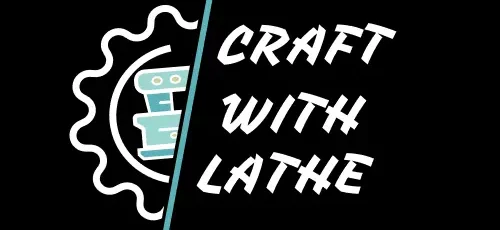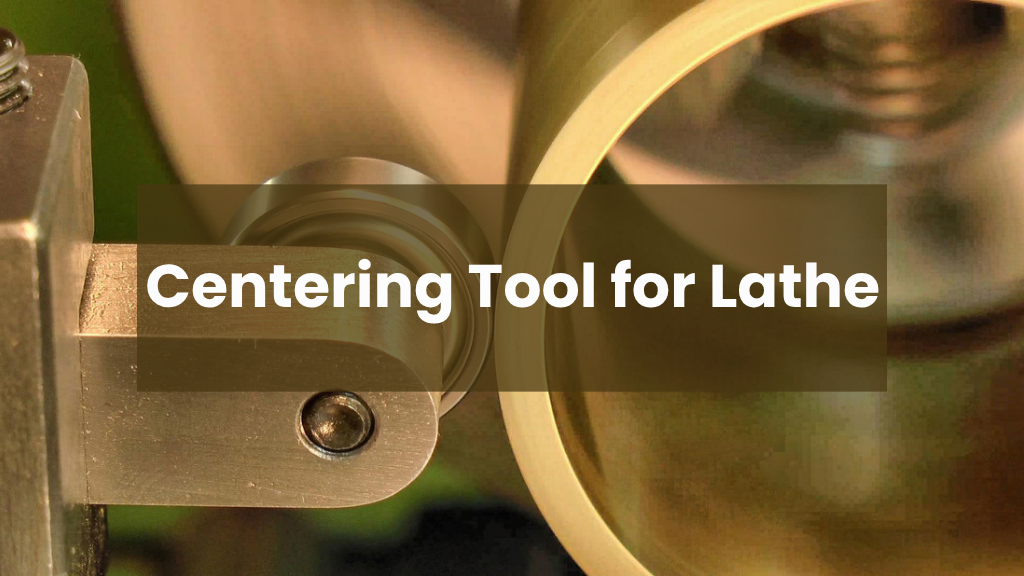Precision and efficiency are key when operating a lathe, and one of the most critical tools to achieve accurate results is the centering tool for lathe. Whether you’re a beginner in metalworking or an experienced machinist, understanding how to properly use a centering tool can drastically improve the quality of your workpieces.
In this guide, we’ll explore what a centering tool is, how it works, different types, how to choose the right one, and practical tips to ensure perfect alignment every time.
What Is a Centering Tool for Lathe?
A centering tool is used to ensure that workpieces are precisely aligned with the rotational axis of a lathe. Proper centering is essential to avoid wobbling, ensure symmetric cuts, and maintain safety during operation.
The centering process ensures that the center of the workpiece is aligned with the tailstock or spindle center, making sure the turning operation runs smoothly without off-center errors.
Why Is Centering Important in Lathe Work?
Accurate centering impacts multiple aspects of machining:
- Improved Surface Finish: Off-center workpieces lead to irregularities in cuts.
- Tool Life Extension: Misalignment can cause uneven tool wear.
- Workpiece Stability: Proper centering avoids vibration and movement.
- Dimensional Accuracy: Essential for parts that require precise tolerances.
How Does a Centering Tool Work?
Most centering tools work by visually or physically confirming that the tip or edge of a tool aligns with the exact center of the workpiece. Some centering tools use dial indicators, while others involve spring-loaded tips or bump-style mechanisms.
Cold Working Method
The “bump method” or “bump tool” applies pressure to a rotating workpiece to help align it. It’s a non-cutting approach and ensures zero damage while finding the true center.
Types of Lathe Centering Tools
Lathe centering tools come in various designs, each suited to specific applications, accuracy requirements, and operator preferences. Here are the most common types:
1. Bump Centering Tool
- Mechanism: Features a spring-loaded plunger or stylus that contacts the workpiece.
- Best For: Quick and repeatable alignment, especially in manual setups.
- Advantage: Speeds up the centering process by allowing small, controlled adjustments without disengaging the workpiece or chuck.
- Use Case: Ideal for rough alignment or when changing parts frequently.
2. Center Finder
- Mechanism: Manually or visually locates and marks the geometric center of round or square stock.
- Best For: Layout and setup before placing the workpiece in the lathe.
- Advantage: Useful for off-machine preparation, especially for drilling or turning operations requiring centered holes.
3. Optical Centering Tools
- Mechanism: Uses optical lenses, mirrors, and crosshairs to visually align with a center point or feature.
- Best For: High-precision jobs in aerospace, medical, or mold-making industries.
- Advantage: Provides non-contact, visual feedback for micron-level accuracy.
- Note: Typically used in CNC lathe setups or high-tolerance manual work.
4. Indicator Holders
- Mechanism: Holds a dial or digital indicator to measure runout and concentricity.
- Best For: Machinists requiring extremely tight tolerances.
- Advantage: Offers precise measurement of misalignment and allows for fine-tuned adjustments during part centering.
- Use Case: Commonly used in 4-jaw chuck setups where each jaw is adjusted individually.
How to Use a Centering Tool on a Lathe
Centering a workpiece correctly is essential for accurate turning. Follow these steps to use a centering tool effectively:
1. Mount the Workpiece
Secure your part in a 3-jaw or 4-jaw chuck, depending on the shape and centering flexibility needed.
- 3-jaw chuck: Self-centering, ideal for round workpieces.
- 4-jaw chuck: Allows manual adjustment for irregular shapes or precise alignment.
2. Attach the Centering Tool
Install the centering tool in the tailstock or tool post, depending on the tool type. Ensure it is tightly clamped and aligned with the spindle axis.
3. Align the Tool Tip
Bring the tip of the centering tool close to the center hole or surface of the workpiece. It should make light contact without excessive pressure.
4. Rotate the Chuck Slowly
Turn the chuck by hand and observe the movement of the tool.
-
If the tool tip wobbles or shifts visibly, the workpiece is off-center.
5. Make Adjustments
Use a soft-faced mallet or bumping tool to gently tap the workpiece into alignment.
-
For a 4-jaw chuck, loosen and tighten opposing jaws to fine-tune the position.
Repeat as needed until the tool shows no movement when the chuck is rotated.
6. Lock and Verify
Once centered, lock the chuck or jaws firmly in place. Rotate the part again to double-check that alignment is consistent before starting the machining operation.
Choosing the Right Centering Tool
Selecting the appropriate centering tool is critical for achieving accurate, efficient machining. Consider the following factors:
1. Material Type
The hardness and machinability of your workpiece material determine the strength and durability required in a centering tool.
- Harder materials like steel or titanium require rigid, high-quality tools that maintain alignment under pressure.
- Softer materials may allow more flexibility in tool selection.
2. Workpiece Size
Larger or longer workpieces amplify alignment errors.
- For large diameters, choose precision indicators or laser centering systems to minimize runout.
- Smaller parts may only need basic bump tools or edge finders.
3. Repeatability Needs
For high-volume or batch production, choose centering tools that allow for consistent, repeatable setups.
-
Tools with locking features or preset reference points save time and reduce human error.
4. Budget and Features
Balance cost with performance requirements.
- Basic tools (like bump bars or wiggler sets) are affordable and sufficient for general work.
- High-end tools (like digital indicators or coaxial centering devices) provide more precision and speed for demanding or CNC applications.
Real-World Use Case: Clickspring Projects
Clickspring Projects demonstrates how a DIY bump centering tool helps achieve high precision on a mini lathe. With simple components and careful use, you can achieve professional results without spending a fortune.
Maintenance Tips
To ensure longevity and precision:
- Clean After Use: Remove chips and coolant to prevent rust
- Lubricate Moving Parts: Especially on bump tools and roller guides
- Check for Wear: Inspect tips and alignment mechanisms regularly
- Store Properly: Keep in dry, organized toolboxes
Benefits of Using a Lathe Centering Tool
A lathe centering tool is essential for precision machining. Here are the key advantages:
- Ensures Symmetrical Turning
Proper centering ensures that the workpiece rotates evenly, resulting in accurate, uniform cuts and improved dimensional consistency. - Speeds Up the Alignment Process
Centering tools help you align the workpiece quickly and accurately, reducing setup time and increasing overall shop efficiency. - Reduces Error Margin
By minimizing runout and misalignment, centering tools lower the risk of machining errors, tool chatter, and out-of-spec parts. - Increases Machining Confidence
When you know your part is perfectly centered, you can operate with greater precision and speed—leading to smoother workflows and better outcomes.
Common Mistakes to Avoid
Even experienced machinists can fall into routine errors. Avoiding these common mistakes can significantly improve accuracy and tool life:
- Skipping the Centering Step: Failing to properly center the workpiece before machining can lead to poor surface finish, dimensional inaccuracies, and excessive tool wear.
- Applying Too Much Force When Bumping: Using excessive force while bumping the part can shift it too far, damage the chuck, or distort the setup. Gentle, controlled adjustments are key.
- Using the Wrong Tool for the Material or Size: Not all centering or burnishing tools are suited for every job. Always match the tool type and size to the workpiece material and geometry.
- Ignoring Tool Maintenance: Dull or dirty tools can scratch surfaces and reduce finish quality. Regular inspection and cleaning help maintain precision and extend tool life.
Advanced Tips for Professionals
Experienced machinists can push the precision and efficiency of their setups further by applying the following expert techniques:
1. Use Digital Indicators
Digital dial indicators provide highly accurate, real-time readings. They speed up setup and reduce human error, especially in tight-tolerance applications.
2. Combine Centering Tools
For critical alignment tasks, use a combination of bump tools and dial indicators. The bump tool allows quick rough centering, while the dial indicator fine-tunes the position with precision.
3. Preheat Workpieces in Cold Environments
In colder environments, especially during winter, preheating metal workpieces helps prevent thermal contraction. This minimizes internal stress and improves machining consistency.
4. Machine Custom Adapters or Jigs
Design and build custom adapters, jigs, or holders that match your specific lathe setup and workpiece geometry. Tailored fixtures improve repeatability and reduce setup time in production environments.
Conclusion
Using a centering tool for lathe is a game-changer for anyone involved in turning operations. Whether you’re crafting custom parts or running production jobs, the benefits of improved precision, faster setup, and better finish quality are undeniable.
Make the smart move, invest in a reliable centering tool and take your lathe work to the next level.
FAQs
What is the difference between a center finder and a centering tool?
A center finder helps locate the center point on a raw workpiece before mounting, while a centering tool helps align the mounted piece with the lathe’s axis.
Can I use a lathe without a centering tool?
Technically yes, but it greatly increases the chances of misalignment and part defects.
Is a bump tool safe to use?
Yes, as long as light pressure is applied and the workpiece is rotating slowly.
Are centering tools only for metal?
No. They can also be used for plastic, wood, and other turnable materials.
How often should I calibrate or replace a centering tool?
Check calibration every few months if used regularly. Replace when components show visible wear.
Can I make my own centering tool?
Yes, with the right components and machining knowledge, many machinists fabricate their own bump tools or dial indicator mounts.
What’s better: 3-jaw or 4-jaw chuck for centering?
4-jaw chucks allow more precise manual adjustments for centering irregular shapes, while 3-jaw chucks are faster but less precise.




